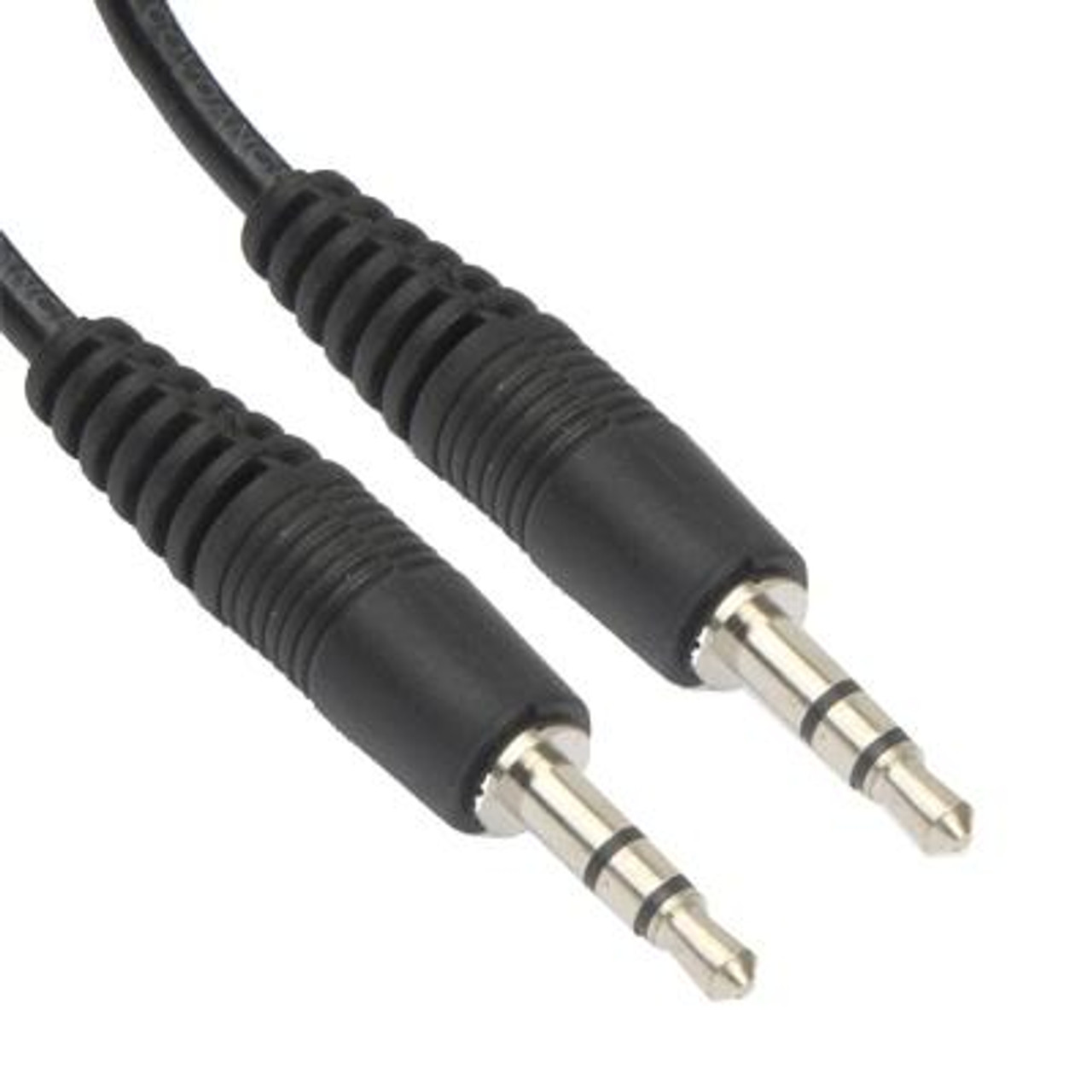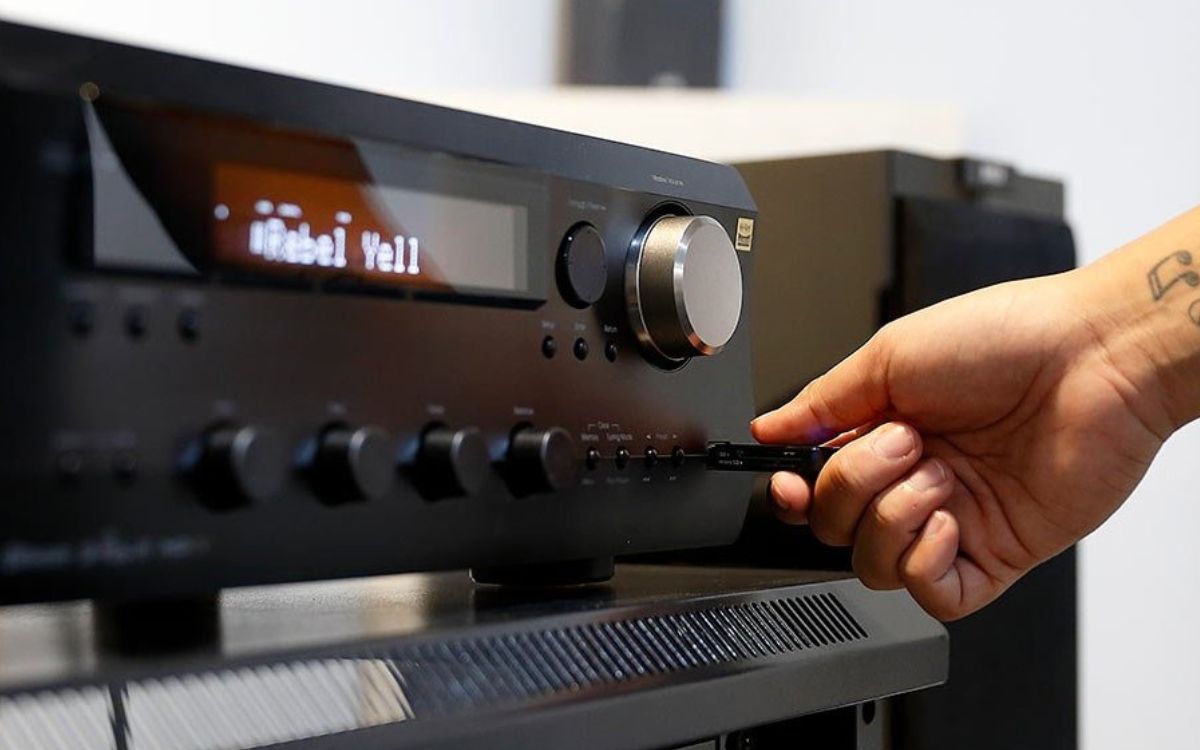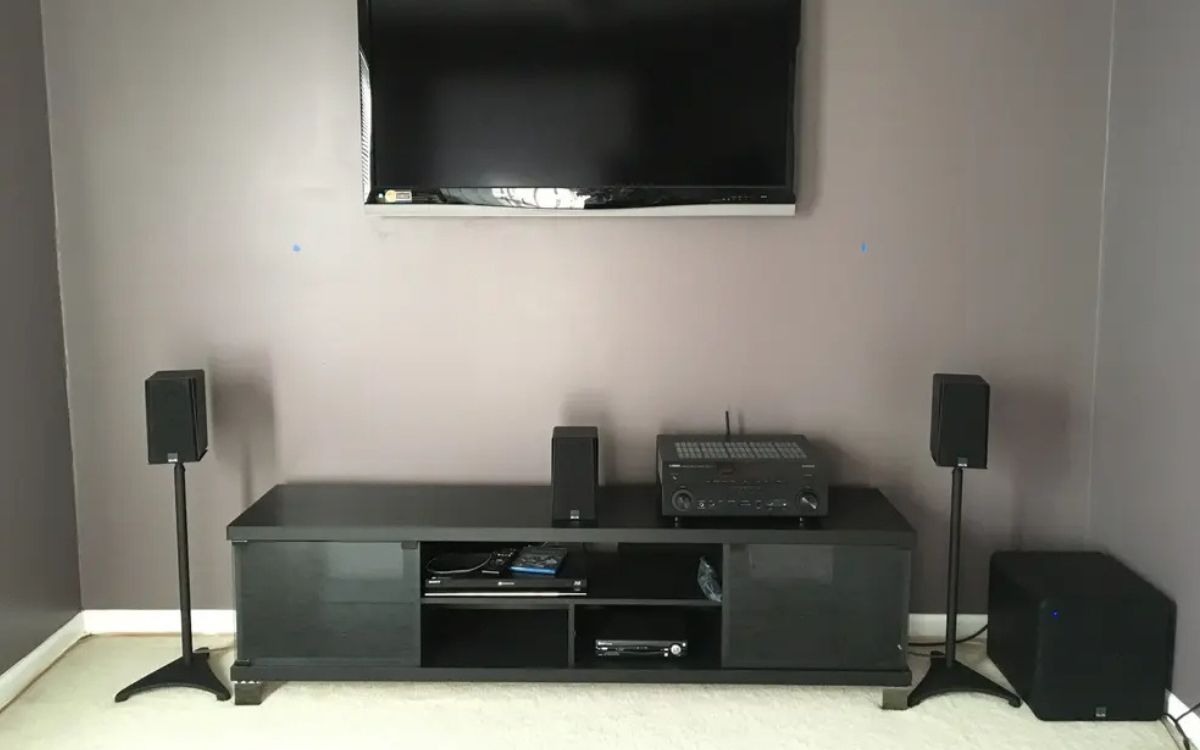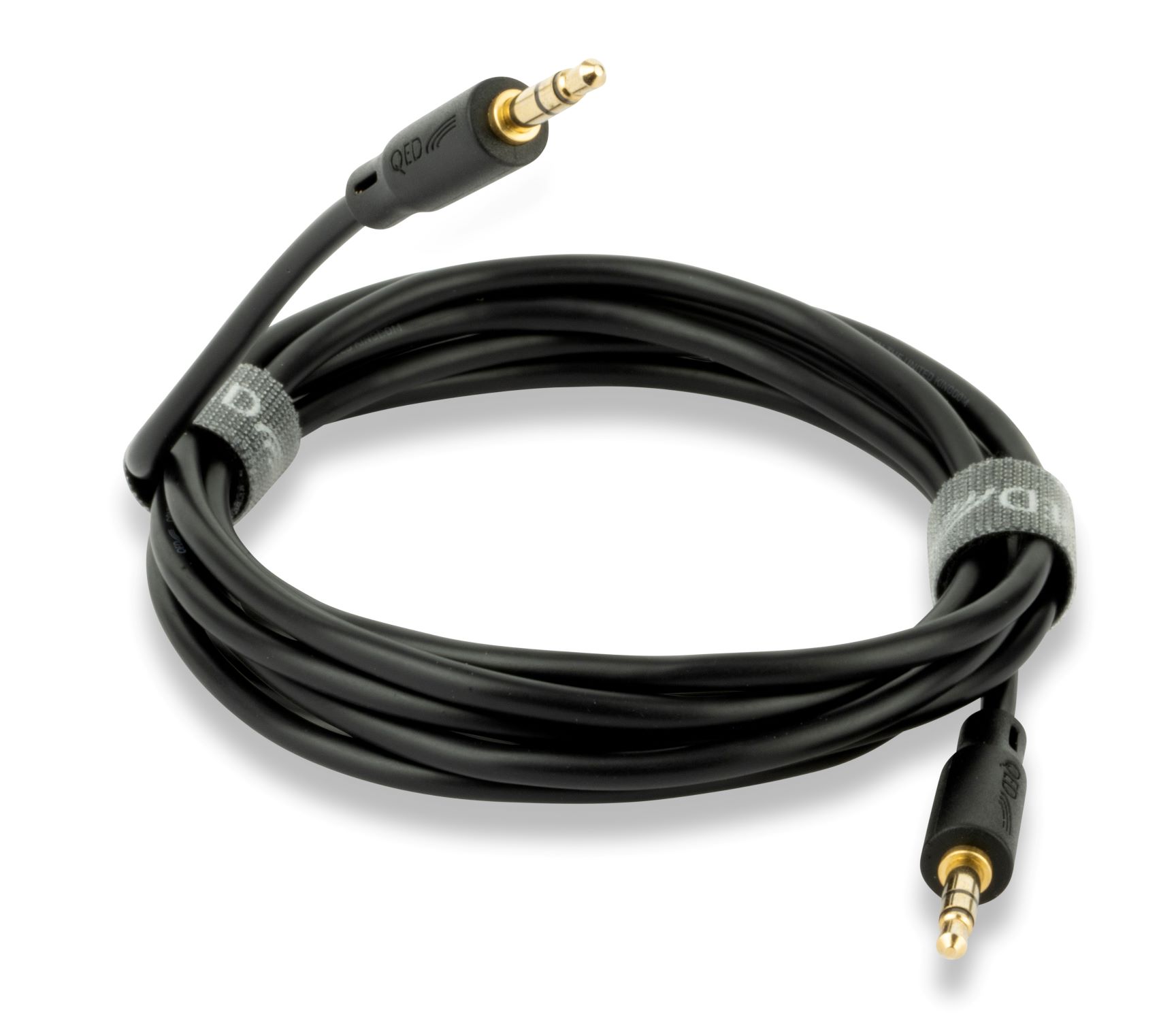Home>Production & Technology>Audio Cable>Which Audio Cable Is Best For Surround Sound


Audio Cable
Which Audio Cable Is Best For Surround Sound
Modified: January 22, 2024
Looking for the best audio cable for surround sound? Discover which audio cable is the ideal choice to enhance your audio experience.
(Many of the links in this article redirect to a specific reviewed product. Your purchase of these products through affiliate links helps to generate commission for AudioLover.com, at no extra cost. Learn more)
Table of Contents
Introduction
Welcome to the world of audio cables, where the quality of your sound system greatly depends on the cables you choose. Whether you’re setting up a surround sound system for your home theater or connecting audio devices for professional use, selecting the right audio cable is crucial for optimal sound quality and performance.
Audio cables serve as the lifelines of any audio setup, enabling the transmission of audio signals from one device to another. The different types of audio cables have various characteristics, such as signal quality, compatibility, and durability. Understanding these differences is essential in order to make an informed decision when choosing the right audio cable for your specific needs.
In this article, we will explore the key factors to consider when selecting an audio cable for surround sound setups. We will delve into the four main types of audio cables used for surround sound systems – HDMI cables, optical cables, coaxial cables, and RCA cables – and discuss their features, benefits, and optimal use cases. By the end, you will have a comprehensive understanding of which audio cable is best suited for your surround sound setup.
Ready to dive into the world of audio cables? Let’s get started!
Key Factors to Consider
When selecting an audio cable for your surround sound system, there are several key factors to consider. These factors will help you determine which cable type will best meet your needs in terms of audio quality, compatibility, ease of installation, and budget. Let’s take a closer look at these factors:
- Audio Quality: The most important factor to consider is the quality of the audio signal transmitted through the cable. Look for cables that provide high fidelity and minimal signal loss to ensure the best sound reproduction.
- Compatibility: Check the compatibility of the audio cable with your devices. Ensure that the cable you choose is compatible with the audio input and output connections of your devices, such as speakers, amplifiers, and audio sources.
- Length: Determine the length of cable you require for your surround sound setup. Measure the distance between your audio devices and choose a cable that is long enough to connect them without compromising audio quality. Avoid unnecessary cable length to minimize signal degradation.
- Installation: Consider the ease of installation when selecting an audio cable. Some cables, like HDMI and optical cables, can transmit both audio and video signals, making them convenient for connecting to TVs and projectors. Conversely, RCA and coaxial cables may require separate audio and video connections.
- Budget: Set a budget for your audio cable purchase. Prices can vary depending on the brand, quality, and cable type. While you don’t need to break the bank, investing in a higher quality cable can significantly enhance the overall audio experience.
By taking these factors into account, you can make an informed decision when choosing the best audio cable for your surround sound system. Now, let’s explore the different types of audio cables commonly used in surround sound setups.
HDMI Cables
HDMI (High-Definition Multimedia Interface) cables are widely used for connecting audio and video devices in surround sound systems. They transmit high-quality audio and video signals, making them a popular choice for connecting TVs, Blu-ray players, gaming consoles, and AV receivers.
HDMI cables can support various audio formats, including Dolby Digital, DTS, and uncompressed multi-channel audio. They offer excellent audio fidelity and minimal signal loss, ensuring immersive surround sound experiences.
One of the main advantages of HDMI cables is their ability to transmit both audio and video signals over a single cable. This reduces the clutter of multiple cables and simplifies the setup process. HDMI cables also support high-definition video resolutions, such as 4K and even 8K, providing a crystal-clear visual experience to complement the high-quality audio.
Another notable feature of HDMI cables is their support for audio return channel (ARC) functionality. This allows the audio signal from your TV to be sent back to your AV receiver or soundbar, eliminating the need for a separate audio cable. ARC simplifies the setup process and maintains a clean and organized cable arrangement.
When selecting an HDMI cable, it is important to consider the version and specifications. Newer HDMI versions, such as HDMI 2.1, offer higher bandwidth and support for advanced audio formats like Dolby Atmos and DTS:X. However, for most surround sound systems, HDMI 2.0 cables are sufficient and more affordable.
Overall, HDMI cables provide a convenient and high-quality solution for connecting audio and video devices in surround sound systems. Their versatility, compatibility, and support for high-definition audio and video make them an excellent choice for immersive home theater experiences.
Optical Cables
Optical cables, also known as TOSLINK or S/PDIF cables, are another popular choice for audio transmission in surround sound systems. These cables use fiber optics to transmit digital audio signals, ensuring high-quality and interference-free audio reproduction.
One of the key advantages of optical cables is their ability to transmit audio in a pure digital format. This means that the audio signal remains untouched and doesn’t suffer from any analog-to-digital or digital-to-analog conversions, preserving the integrity of the sound. Optical cables are capable of transmitting various audio formats, including Dolby Digital and DTS, delivering immersive surround sound experiences.
Optical cables are ideal for connecting audio devices that have optical audio ports, such as soundbars, DVD players, and game consoles. They provide a secure and reliable connection, immune to interference from electromagnetic fields and radio frequency signals. This makes them a great choice for setups where interference can be an issue, such as in close proximity to electronics or in areas with high levels of electromagnetic interference.
These cables are also relatively easy to install, as they are lightweight and flexible. They come equipped with standard square-shaped connectors that can be easily inserted into the corresponding optical ports of your audio devices. However, it’s important to note that optical cables have a limited transmission distance compared to other cable types. Typically, they can transmit audio signals up to 10 meters (33 feet) without significant signal loss.
When purchasing an optical cable, ensure that it supports the specific audio formats and sample rates required by your audio devices. Additionally, check the build quality of the cable to ensure it is sturdy and durable for long-term use.
In summary, optical cables are a reliable and high-quality choice for transmitting digital audio signals in surround sound systems. Their ability to deliver interference-free audio and preserve the digital integrity of the sound makes them a popular option for audio enthusiasts.
Coaxial Cables
Coaxial cables are widely used in audio and video setups, including surround sound systems. These cables consist of multiple layers, including a central conductor, insulation, shielding, and an outer protective sheath. They are designed to transmit high-quality audio signals with minimal interference and loss.
Coaxial cables are capable of carrying both analog and digital audio signals, including formats like Dolby Digital and DTS. They provide a reliable connection between audio devices, such as AV receivers, speakers, and cable/satellite boxes.
One of the main advantages of coaxial cables is their durability and ability to withstand external interference. The shielding layers within the cable effectively block electromagnetic interference and external noise, ensuring a clean and uninterrupted audio signal. This is particularly beneficial in environments where there are many electronic devices and potential sources of interference.
Coaxial cables are relatively easy to install, with most having RCA-style connectors. These connectors are color-coded, making it simple to identify and connect the corresponding audio inputs and outputs on your devices. Additionally, coaxial cables have a longer transmission distance compared to optical cables, allowing you to set up your surround sound system over longer distances without signal degradation.
It’s important to note that coaxial cables are not capable of transmitting video signals. If you require both audio and video transmission, you may need to use a combination of coaxial cables and other cables, such as HDMI cables.
When selecting a coaxial cable, consider the impedance rating, as it should match the impedance rating of your audio devices for optimal performance. Additionally, choose a cable with a higher quality shielding layer to minimize interference and signal loss.
In summary, coaxial cables are a reliable and durable option for transmitting audio signals in surround sound systems. Their ability to withstand external interference and deliver high-quality audio makes them a popular choice for both professional and home audio setups.
RCA Cables
RCA (Radio Corporation of America) cables, also known as phono cables, are commonly used for audio transmission in home audio systems, including surround sound setups. These cables have been around for decades and are known for their simplicity and versatility.
RCA cables feature a distinctive design with two or three connectors at each end, typically colored red and white for stereo audio signals. The red connector is used for the right audio channel, while the white connector is used for the left audio channel. Some RCA cables also include a yellow connector for composite video signals.
RCA cables are analog cables and can transmit stereo audio signals. They are commonly used to connect audio devices such as DVD players, CD players, and game consoles to audio receivers or amplifiers in surround sound systems.
One of the main advantages of RCA cables is their affordability and widespread availability. They are often included with audio devices or can be easily purchased at a low cost. Additionally, RCA cables are relatively easy to set up, as the color coding allows for intuitive connections.
However, it’s important to note that RCA cables are susceptible to interference and signal degradation, especially over longer distances. This can result in lower audio quality and potential noise or distortion. To minimize these issues, it is recommended to use high-quality shielded RCA cables and keep the cable length as short as possible.
RCA cables also have limitations in terms of channel support and audio formats. They are primarily used for stereo audio, so if you require surround sound capabilities, you may need to use multiple RCA cables or consider other cable types like HDMI or optical cables.
Overall, RCA cables are a straightforward and budget-friendly option for basic audio connections in surround sound systems. While they may not offer the same level of audio quality or advanced features as other cable types, they are suitable for casual audio setups or situations where simplicity is preferred.
Conclusion
Choosing the right audio cable for your surround sound system is crucial to achieving optimal audio performance and enhancing your overall listening experience. Each audio cable type – HDMI, optical, coaxial, and RCA – offers its own advantages and considerations.
If you’re looking for a versatile and high-quality option that can handle both audio and video, HDMI cables are the way to go. They provide excellent audio fidelity, support advanced audio formats, and can transmit high-definition video signals.
For pure digital audio transmission with minimal interference, optical cables are a reliable choice. They offer secure connections and are immune to electromagnetic interference, making them ideal for setups with potential sources of interference.
Coaxial cables, on the other hand, are known for their durability and shielding against external interference. They can transmit both analog and digital audio signals, making them suitable for a wide range of audio devices.
If you’re on a budget or prefer a simple and straightforward option, RCA cables are affordable and widely available. While they may not offer the same level of audio quality or advanced features as other cable types, they can still provide satisfying stereo audio connections.
In conclusion, when selecting an audio cable for your surround sound system, consider the key factors such as audio quality, compatibility, length, installation, and budget. Assess your specific needs and preferences to determine which cable type best suits your requirements.
Remember, investing in high-quality cables and ensuring proper cable management can go a long way in enhancing your surround sound experience. So, take your time, do your research, and choose the audio cable that will deliver the immersive and exceptional sound you deserve.











